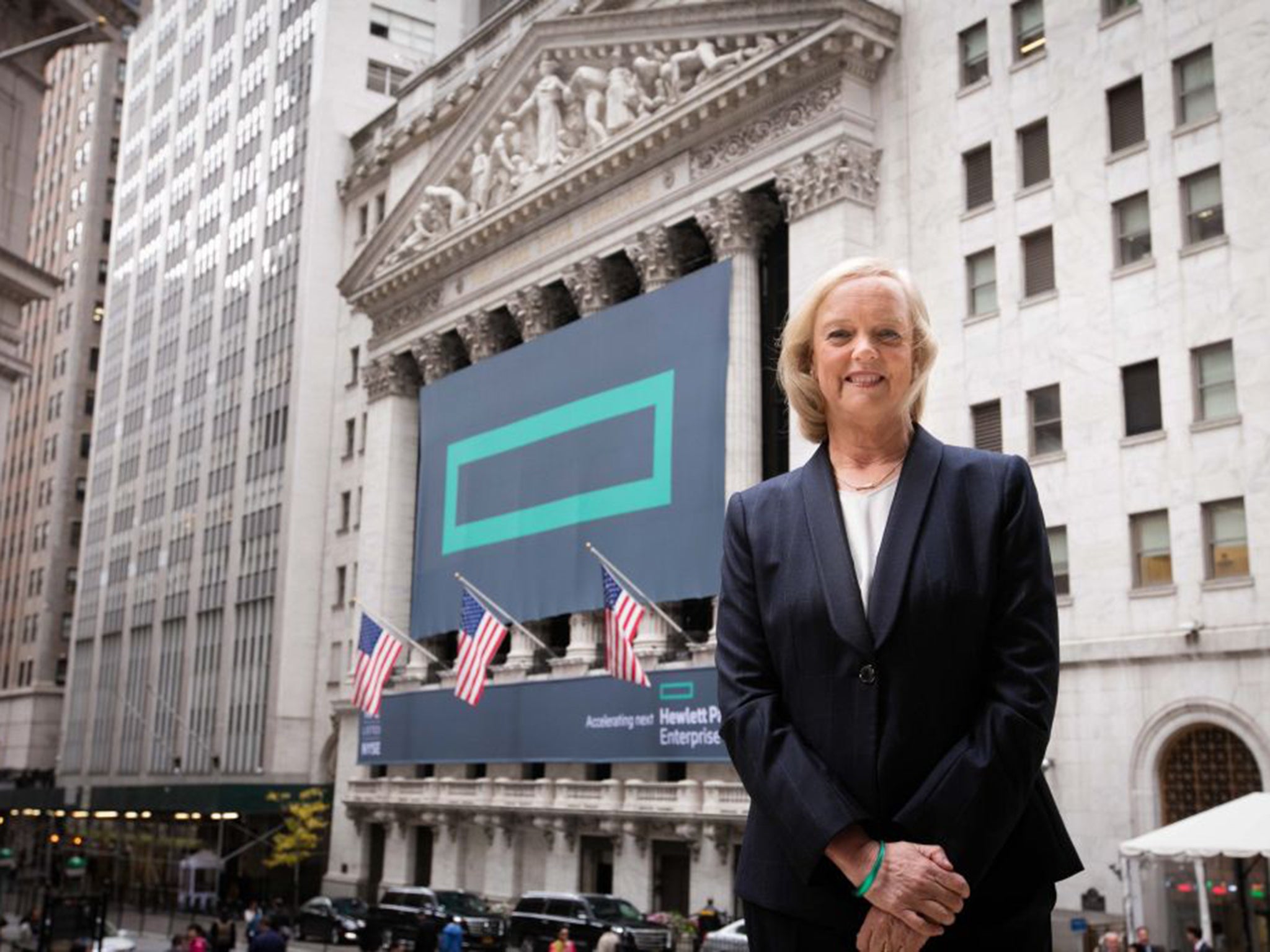Meg Whitman hails logic of Hewlett-Packard split
Chief executive justifies the separation of the technology giant.

First it was Hanson. Now Google, Alcoa and HP are getting amicable divorces. Splitting giant companies up into smaller entities was once rare, now it is in danger of becoming a trend.
Hewlett Packard, the venerable 76-year old technology giant, began trading as two separate entities yesterday, the culmination of a 5-year plan to turn itself around following a period of disastrous acquisitions and what looked like terminal decline. HP will now trade as Hewlett Packard Enterprise, which includes its business data services and software divisions, and HP Inc, which will operate its computer and printer manufacturing and sales business.
The decision to demerge its two distinct business units was taken in 2012 as part of an aggressive de-leveraging, cost-cutting and restructuring programme. Meg Whitman, the former EBay chief executive who ran Hewlett Packard and will now be Chief Executive at the Enterprise company, spoke to journalists in New York yesterday after having run the opening bell at the New York Stock Exchange.
Ms Whitman predicted that more companies will do the same thing: “We decided that separation made a lot of sense because the two companies have different products and different customers. We are seeing a lot of companies de-merging and I think this is going to be something we see more of because the world is changing so fast. I see a lot of my CEO colleagues thinking hard about this.”
Not only does Ms Whitman see the trend growing as companies seek the ability to move faster, but her business will also seek to cash in. “As a result of our experience we now have a burgeoning separation consultancy business with 400 employees. Splitting HP up was an enormous undertaking, including separating 75,000 email addresses, filing over 300 new tax entities and 2,700 distinct IT systems.”
The separation will leave two companies with a combined market capitalisation of approximately $110bn. Hewlett Packard Enterprise will have 252,000 employees globally and annual revenues of $35bn. Ms Whitman also said that the 3,000 layoffs announced earlier this month will be “the last restructuring” at Hewlett Packard Enterprise.
The re-branding of HP did not include changing the name, despite the company’s chequered recent past. “We didn’t give a lot of thought to creating a new brand name,“ she said. ”The reason is that although there have certainly been some challenges at HP over the last decade or so it remains a fantastically powerful brand name. Creating an entirely new brand from the bottom up costs a huge amount of money. We decided that our name has a huge amount of equity in it and changing it was not a great way to spend shareholder money.”
Ms Whitman also spoke about increased demand for cybersecurity. “This is an arms race. It’s the good guys verses the bad guys. Someone asked me the other day ‘when will I be done? When will my company be secure. In an arms race it’s a constantly moving target and you will never be secure, here at HP we are spending three times more on security than we did just two years ago.”
Hewlett Packard has struggled to shrug off the ill-effects of its two most high profile acquisitions – the $25bn purchase of Comaq in 2002 under former Chief Executive and current Republican presidential candidate Carly Fiorina, and the 2007 $11.7bn acquisition of British software company Autonomy, a decision taken by another former HP Chief Executive Leo Apotheker. Both acquistions cost billions in restructuring costs and resulted in the ouster of Ms Fionrina and Mr Apotheker.
Not only has Hewlett Packard suffered through problems that were very much its own making, its business enterprise markets are increasingly dominated by the likes of Google and Amazon. It withdrew from the private cloud computing market, announced last week, although the private cloud market is a fraction of the size of the public cloud market. In a relatively slow growth market, separating the low-grow, low margin computer and printer business from the higher growth server, software and business services market makes sense to most analysts.
Successfully turning Hewlett Packard around may be the greatest challenge of Ms Whiman’s career. Much of her reputation is built on turning EBay from a minor corner of the internet into a multi-billion dollar business. Reinventing and reinvigorating a 76-year old with multiple health problems in a market dominated by young bucks is a very different challenge.
Join our commenting forum
Join thought-provoking conversations, follow other Independent readers and see their replies
0Comments